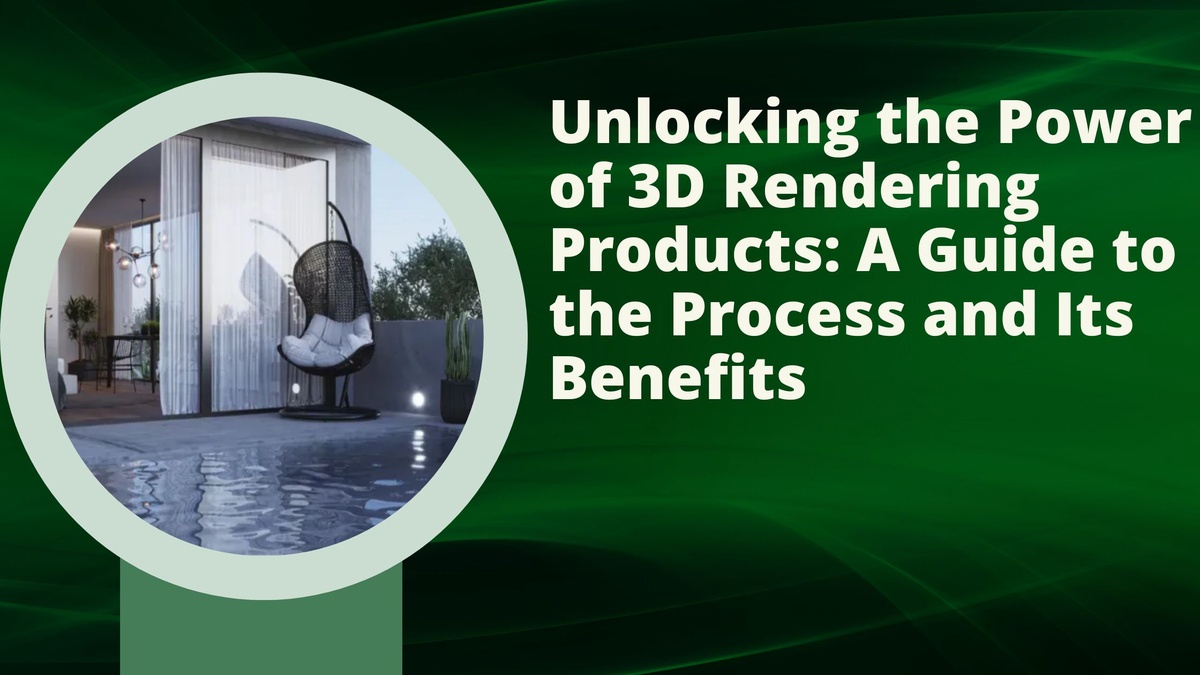Introduction
In the rapidly evolving world of product design and marketing, the use of 3D rendering has become a game-changer. Brands are now leveraging 3D rendering products to create stunning visuals that not only showcase their offerings but also captivate their target audience. This blog explores the intricacies of 3D rendering products, the process involved, and the manifold benefits it brings to the table.
Understanding 3D Rendering Products
3D rendering is the process of converting 3D models into 2D images or animations. When applied to product visualization, it allows designers and marketers to create lifelike representations of products, enabling consumers to visualize them in a realistic and immersive manner. 3D rendering products involve the use of specialized software and skilled professionals to bring these virtual representations to life.
The Process of 3D Product Rendering
Modeling: The process begins with creating a 3D model of the product. This can be done using Computer-Aided Design (CAD) software or by 3D scanning an existing physical product.
Texturing: Once the model is ready, textures and materials are applied to make the product look realistic. This involves adding details such as color, patterns, and surface finishes.
Lighting: Lighting plays a crucial role in 3D rendering. Designers strategically place lights to simulate real-world lighting conditions, enhancing the visual appeal of the product.
Rendering: The final step involves using rendering software to generate the 2D images or animations. This process can be resource-intensive, but it produces high-quality, photorealistic visuals.
Benefits of 3D Product Rendering Services
Realism: 3D rendering products provide a level of realism that traditional photography often struggles to achieve. The ability to showcase products from various angles and in different environments enhances the customer's understanding and appreciation of the product.
Cost-Effective: Traditional product photography can be expensive, especially when dealing with prototypes or large product catalogs. 3D rendering eliminates the need for expensive photoshoots and allows for easy updates and modifications.
Customization: With 3D rendering, products can be easily customized to suit specific needs. Whether it's changing colors, materials, or configurations, designers have the flexibility to tailor visuals according to brand requirements.
Quick Turnaround: Traditional photography can be time-consuming, especially when waiting for prototypes or dealing with complex setups. 3D rendering offers a quicker turnaround as it doesn't rely on physical products, streamlining the design and marketing process.
Consistency: 3D rendering ensures consistency across all marketing materials. Whether it's for websites, catalogs, or advertisements, the visuals remain consistent, strengthening brand identity.
Conclusion
In the competitive landscape of today's market, the use of 3D rendering products has become a valuable asset for businesses. The ability to present products in a visually appealing and realistic manner not only enhances customer engagement but also streamlines the design and marketing workflow. As technology continues to advance, the adoption of 3D Product rendering services is poised to become increasingly prevalent, reshaping the way brands showcase and market their products.


No comments yet